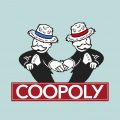What looks at first like the best way forward for one individual often turns out to be the worst solution for the group he’s in. The success of cooperating or competing with others is frequently contingent not just on individual efforts and results, but also on what the competition decides to do. In the business world you have to consider not only how your clients react to a business decision, but how other companies in your value chain respond to your actions. Traditionally, we tend to view others in the value chain as our competitors, to be eliminated before we lose the fight for self-preservation.
We are thus engaged in the prisoner’s dilemma, the famous problem of game theory used here to understand business competition. In the classic dilemma, two individuals must decide whether to cooperate or to compete with each other. If they both decide to cooperate, neither one will gain as much as if once decides to compete and the other does not. Without knowing what decision the other will make, each one has to make his own individual decisions and wait to see what the other one does. The prisoner’s dilemma is aptly applied to the world of market prices as determined by various agents in the value chain, such as cooperatives in the same town marketing the same product in the same territory.
Agro-food cooperatives of Spain are world leaders in products such as oil, fruit, vegetable, and wine. So, let’s suppose there are two cooperatives for a product, and each one has an equal share in the market. At some point, both cooperatives have to decide independently whether they will offer a 25% discount to their clients or not. If only one does it, that cooperative will increase its control on the market and also its overall profits. But if both cooperatives lower prices by 25%, neither one will increase sales volume, and both will see profits dropping for themselves and their co-op members.
Despite that, from each cooperative’s individual point of view, the best option will always be to offer the discount. If one of them drops prices and the other one does not, then there’s the risk of them losing a whole lot of clients. Yet if the first one does nothing, the second company could reap huge profits from offering a discount. In the end they will both drop prices, neither one will increase its market share, and both will suffer 25% losses while their associates clamor for explanations about what’s going on. Sound familiar?
We might wonder what is the best strategy for when cooperatives confront the same dilemma time after time, week after week, one season after another.
In the “iterated prisoner’s dilemma”, where the same situation repeats itself over and over again, is it more likely that each cooperative will make a rational choice to compete with others, or to cooperate?
Robert Axelrod from the University of Michigan conducted his famous experiments on the iterated prisoner’s dilemma from 1977 onward, and published his findings in a book called The Evolution of Cooperation (1984.) Axelrod organized a computer-based tournament whose objective was to compare different strategies for the prisoner’s dilemma, repeated over time. Surprisingly, the winning strategy was ‘Tit for Tat’, which consists in responding to your adversary with the same action he performed the last time. One must cooperate in the first round, but then the strategy dictates that you imitate what was done by the other cooperative in the preceding round.
Based on the Tit for Tat strategy, we can imagine a cooperative that begins in good faith and decides not to compete by dropping prices this season, in the first round. If at any time after that a competitor drops his prices, the strategy recommends that the first company retaliate immediately. Nevertheless, if the competitor later returns to a cooperative attitude towards the first company, there is forgiveness and a return to collaboration.
In any case, the prisoner’s dilemma has yet another, simpler solution, which is to join up with another player – no price war, no games – given that we mustn’t gamble away what puts food on the table. If we start the first round by playing the game, then we may be obligating the next link in the chain to play as well. We are then constructing amongst ourselves a monstrous value-shredding machine that annihilates the common good of the chain. Our future in the agro-food sector won’t bear many more rounds of the prisoner game, especially as we hold such a determinate position in the markets where we all interact.


